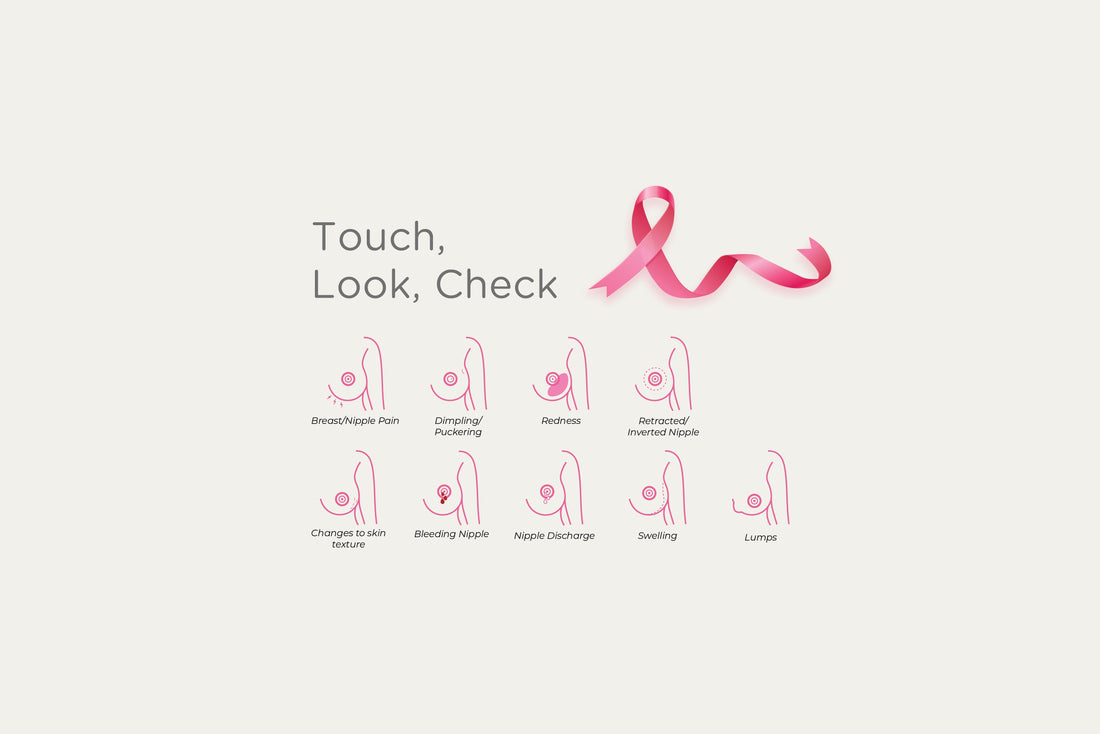
As October descends, your mind automatically turns to pumpkins and costumes. But the month of October is more than that; it is also the month of Breast Cancer Awareness. Let’s do a quick Q&A. How many of you have checked for breast cancer signs over the year? Now, how many of you know what the right method for checking is? If your answers were not what it should've been, don't worry, we've got your back. This season, before you rush out looking for costumes and tickets to Halloween parties, let's take a minute to talk about breast cancer and how you can detect it right from the comfort of your home.
Pink isn't just a pretty color this month, it’s a reminder that 1 in 8 women face breast cancer in their lifetime. Every ribbon, every campaign, every little splash of pink is a reminder of their struggle, strength and the battle they fought, determined to recover and come back stronger. At the same time, the color pink is also there to remind us of the importance of early detection. It’s the little nudge we all need to care for ourselves, check in regularly, and keep the conversation going.
What exactly is breast cancer? The term gets thrown around very often these days, but how many of us know exactly what happens when it occurs in a body? Breast cancer happens when cells in the breast grow uncontrollably, forming a lump or tumor that can sometimes spread to other parts of the body. While genetics, age, and family history are some of the leading causes for this type of cancer, others are linked to lifestyle, like diet, stress, smoking, alcohol, and lack of exercise. Even things like hormonal changes, late pregnancies, or not breastfeeding can play a role. Now, before you jump the gun and start panicking, here’s the important takeaway- while you can’t change everything, being aware and proactive by doing thorough self-checks, regular screenings, and making healthy choices can help make a huge difference.
Early detection changes everything, and that is a life-saving truth. When breast cancer is found early, it’s far more treatable, with survival rates as high as 90%. Caught late, it becomes harder to fight. The difference comes down to how well you know your body. Self-checks, regular screenings, and paying attention to unusual changes can help tip the scales in your favour. But let’s be honest — most of us either get too busy or too lazy to do this, and we end up ignoring the possibility of a real threat. Think of it this way: you’d never ignore the low- battery warning on your phone. So why ignore the signs your body might be giving you? Your phone may be expensive, but your body is priceless, and it deserves better than being taken for granted.
While breast cancer doesn’t look the same for everyone, some common early signs can help detect it:
- A lump or thickening in the breast or underarm
- Changes in the shape or size of the breast
- Dimpling or puckering of the skin (like an orange peel)
- Redness, swelling, or changes in skin texture
- Pain or tenderness in the breast or nipple
- Nipple discharge (other than breast milk), or bleeding
- A nipple that becomes inverted (pulls inward) suddenly
Reaching out to yourself doesn't have to be daunting or overwhelming. It can actually be as effortless as adding a step to the rituals you already enjoy, like your skincare routine or unwinding with tea at night. A monthly self-breast exam is quick, simple, and one of the most effective ways to detect changes early. Consider it as paying your body the same amount of attention and care that you pay to your face, hair, or clothes, only this time, it might actually save your life. Here’s how you can do it:-
- Look – Stand in front of a mirror, shoulders back. Check for any changes in shape, size, dimples, or redness.
- Feel (lying down) – Lie down, lift one arm, and with the other hand, gently feel your breast in a circular motion, moving towards the armpit. Repeat on the other side.
- Feel (standing up) – You can also check in the shower, when your skin is slippery.
- Using your fingertips, slide around in a circular motion over your whole breast and armpit region.
- Repeat – Do it once a month, preferably a few days after your period, when your breasts are least likely to feel swollen or tender.
That’s it! Quicker than scrolling through three reels, and way more important. And this is not just about you; it's about everyone. Text your friend, remind your mom, check in with your cousin. Because sharing a reminder could literally save someone's life. October reminds us that self-care is more than sheet masks and scented candles (although we love those too). It's about paying attention to your body, being proactive, and looking out for each other. So, this month, wear pink, check yourself, and spread the word.


